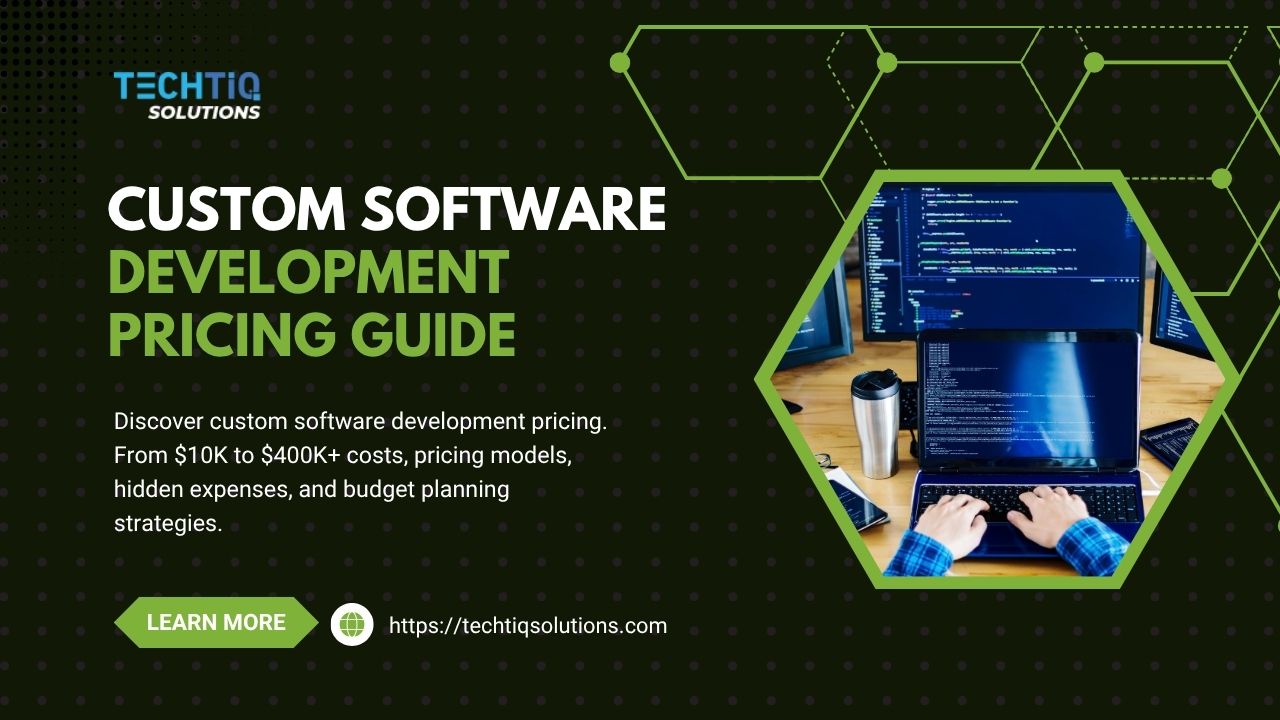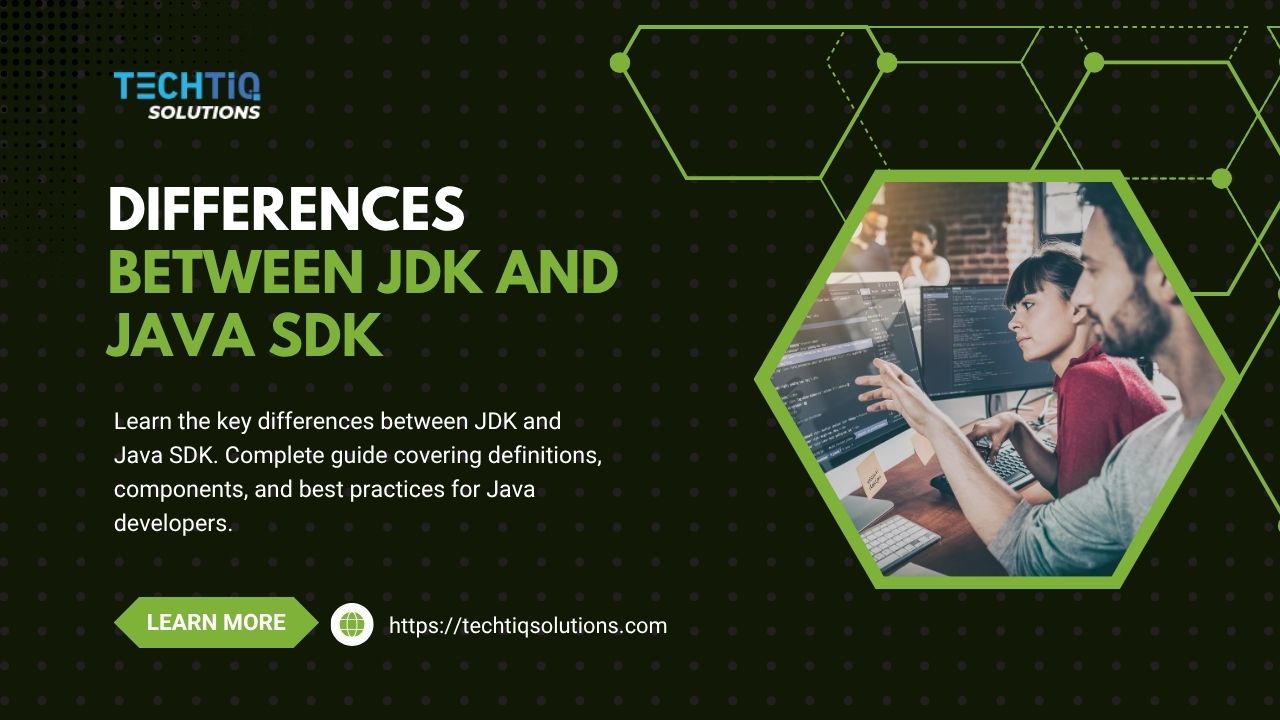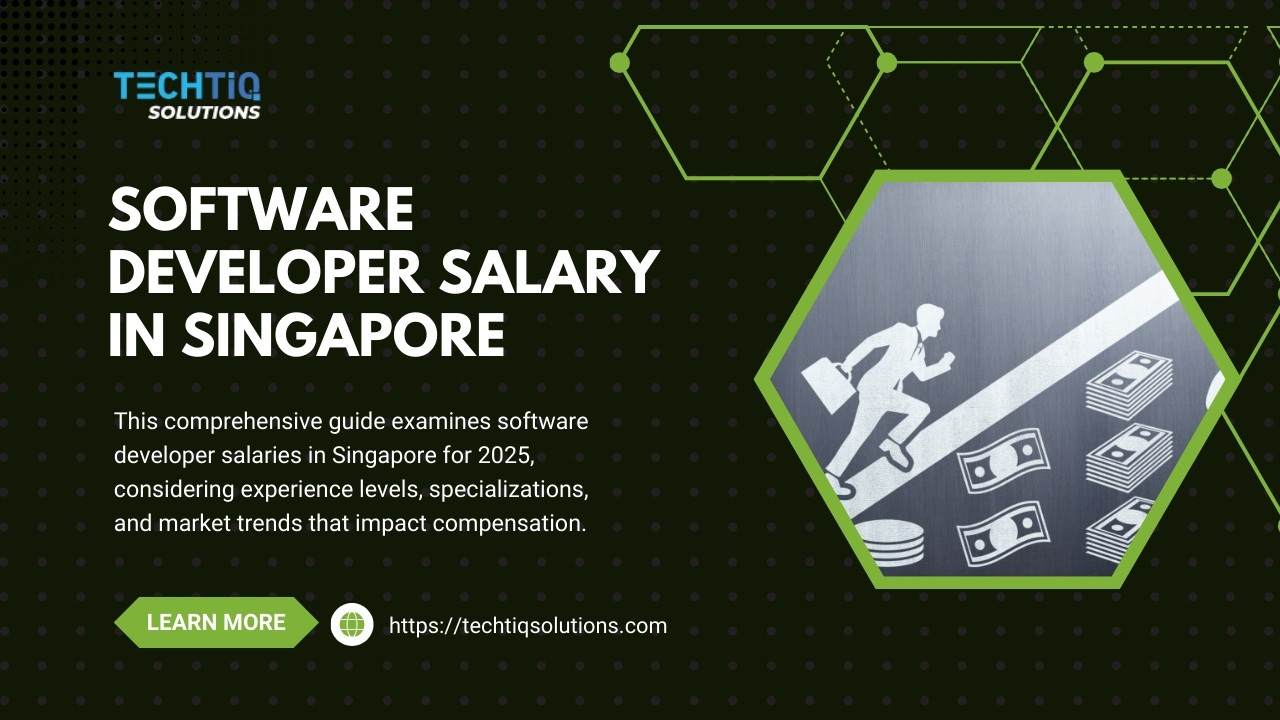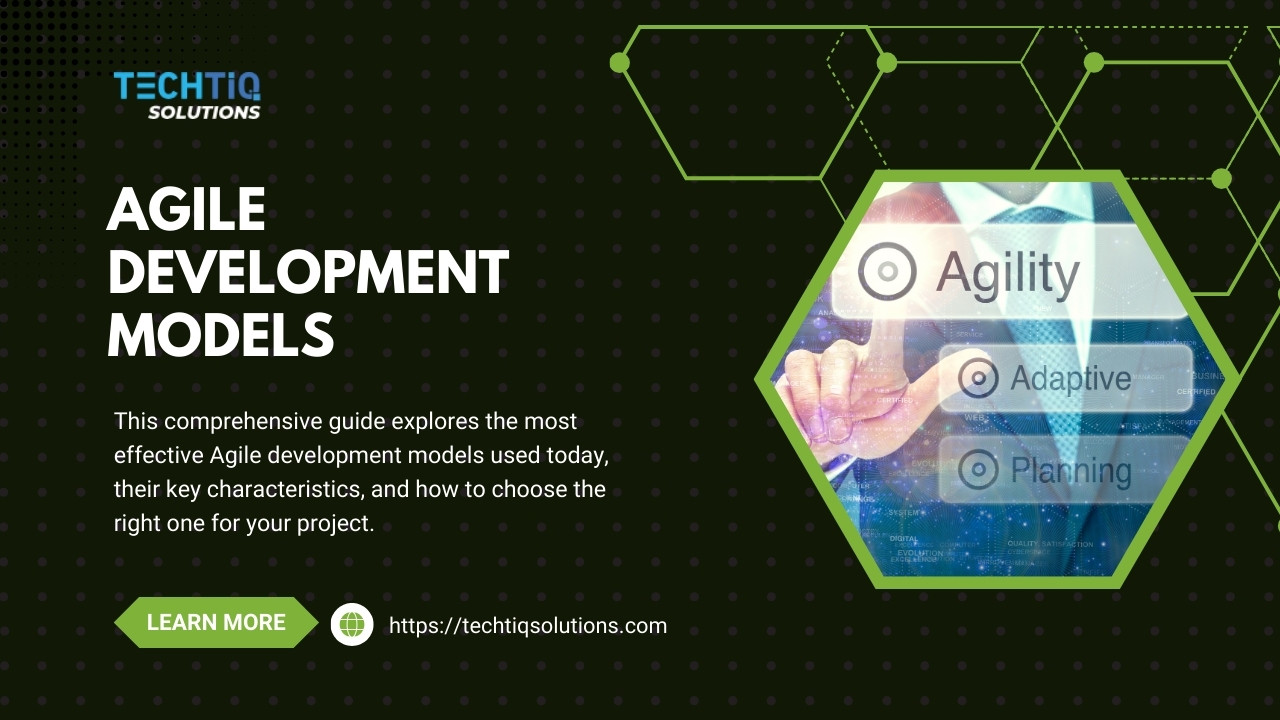Agile software development has revolutionized the way software is built and delivered. This iterative approach emerged in the late 1990s as a response to the limitations of traditional waterfall methodologies, which were often seen as rigid and inflexible. Agile emphasizes flexibility, collaboration, and customer satisfaction, enabling teams to respond effectively to evolving needs and deliver high-quality software rapidly[1][2].
This comprehensive guide will explore the fundamental principles of Agile development, examine popular frameworks, analyze its benefits and challenges, and provide practical insights for successful implementation. Whether you’re new to Agile or looking to enhance your current practices, this article offers valuable information for navigating the Agile landscape.
At its core, Agile prioritizes:
-
Individuals and interactions over processes and tools
-
Working software over comprehensive documentation
-
Customer collaboration over contract negotiation
-
Responding to change over following a plan[3][4]
This approach has been widely adopted across industries, leading to significant improvements in project success rates, productivity, and revenue. Agile is particularly well-suited for projects in the dynamic realm of digital services, as it focuses on designing services based on real user needs and constantly improving software through continuous loops of testing, validated learning, and feedback from users[4].
Key Takeaways
Agile software development offers organizations numerous advantages in today’s fast-paced digital environment:
-
Iterative Approach: Agile breaks projects into manageable sprints, allowing for continuous delivery and adaptation to changing requirements.
-
Customer-Centric: By prioritizing customer collaboration and feedback, Agile ensures the final product meets actual user needs.
-
Framework Flexibility: Organizations can choose from several frameworks (Scrum, Kanban, XP, etc.) based on their specific needs and project requirements.
-
Team Empowerment: Self-organizing teams with clearly defined roles (Product Owner, Scrum Master, Development Team) enhance productivity and innovation.
-
Quality Focus: Continuous testing and integration throughout the development cycle leads to higher-quality software with fewer defects.
-
Business Alignment: Regular demonstrations and reviews ensure the product remains aligned with business objectives and market needs.
-
Measurable Progress: Agile metrics like burndown charts and velocity provide clear visibility into project status and team performance.
-
Implementation Success: Companies across diverse industries have realized significant benefits by adopting Agile practices, including faster time-to-market and improved customer satisfaction.
For organizations considering Agile adoption, success depends on selecting the right framework, securing stakeholder buy-in, starting with smaller projects, and fostering a collaborative culture of continuous improvement.
What is Agile Methodology?
Agile methodology encompasses a collection of frameworks and practices that guide software development projects. It is based on the Agile Manifesto, a document created in 2001 by a group of 17 software developers who sought a better way to develop software[4]. The manifesto outlines the core values and principles of Agile development.
Agile emphasizes delivering value through smaller, functional software components, rather than waiting to deliver a complete application all at once. This iterative approach allows for continuous delivery and integration, ensuring that the software remains aligned with user needs and business goals throughout the development process[5].
The 12 Principles of Agile Development
The Agile Manifesto is further supported by 12 principles that guide Agile development:
-
Customer satisfaction through early and continuous software delivery
-
Accommodate changing requirements throughout the development process
-
Frequent delivery of working software
-
Collaboration between the business stakeholders and developers throughout the project
-
Support, trust, and motivate the people involved
-
Enable face-to-face interactions
-
Working software is the primary measure of progress
-
Agile processes to support a consistent development pace
-
Attention to technical detail and design enhances agility
-
Simplicity: maximizing the amount of work not done
-
Self-organizing teams encourage great architectures, requirements, and designs
-
Regular reflections on how to become more effective
Key Roles in Agile Project Management
To effectively manage projects and ensure successful outcomes, Agile project management often involves three key roles:
-
Product Owner: Acts as the voice of the customer, communicating the vision to the team, setting project goals, managing the scope, adapting to changing requirements, and prioritizing product features.
-
Scrum Master: Facilitates the Agile process, guiding the team, removing obstacles, and ensuring adherence to Agile principles.
-
Development Team: Responsible for completing the tasks and delivering the project, working collaboratively and leveraging their diverse skills to achieve the project goals[6].
Further reading:
Understand the differences between software developers and software engineers
The Agile Software Development Life Cycle
The Agile Software Development Life Cycle (SDLC) is an iterative and incremental process that guides software development projects. It typically consists of six phases:
-
Concept: The initial idea for the software is conceived, and the project’s scope and feasibility are assessed.
-
Inception: The project team is formed, initial requirements are gathered, and the project’s architecture and design are outlined.
-
Iteration/Construction: The software is developed in a series of iterations, with each iteration producing a working increment of the software.
-
Release: The software is tested, deployed, and released to the users.
-
Production: The software is monitored and maintained in production, with bug fixes and enhancements being released as needed.
-
Retirement: The software is eventually retired when it is no longer needed or when it is replaced by a newer version.
Unlike traditional models where requirements gathering must be completed before proceeding to the design and development phase, in Agile, design and implementation are not separate phases but rather intertwined activities that occur iteratively throughout the project lifecycle[11]. This focus on code development over extensive documentation allows for faster delivery and continuous improvement of the software.
Popular Agile Frameworks
There are many different Agile methodologies in use today, each with its own set of principles and practices. Selecting the appropriate Agile framework is crucial for successful project implementation. Factors such as team size, project complexity, company culture, customer engagement, and the need for adaptability should be carefully considered when making this decision[7].
Some of the most popular Agile frameworks include:
Scrum
Scrum is a widely used framework that breaks down work into short iterations called sprints, typically lasting 2-4 weeks[5]. It emphasizes teamwork, collaboration, and iterative progress towards a common goal.
Key Features:
-
Defined roles (Product Owner, Scrum Master, Development Team)
-
Sprint planning
-
Daily scrums
-
Sprint reviews
-
Sprint retrospectives
Benefits:
-
Increased productivity
-
Improved collaboration
-
Faster time to market
-
Enhanced flexibility
Kanban
Kanban is a visual system for managing work as it moves through a process. It emphasizes continuous flow, limiting work in progress, and visualizing the workflow to identify and address bottlenecks[5][7].
Key Features:
-
Kanban board for visualizing workflow
-
Work-in-progress limits
-
Continuous flow
Benefits:
-
Improved efficiency
-
Reduced waste
-
Increased transparency
Lean Software Development
Lean software development is an Agile methodology that focuses on maximizing value while minimizing waste. It emphasizes continuous improvement, fast delivery, and respect for people[7].
Key Features:
-
Focus on value
-
Waste elimination
-
Continuous improvement
-
Respect for people
Benefits:
-
Reduced development time
-
Improved efficiency
-
Increased customer value
Extreme Programming (XP)
XP is a software development methodology that emphasizes customer satisfaction, communication, teamwork, and best practices in software coding. It promotes practices such as pair programming, test-driven development, and continuous integration to deliver high-quality software quickly[7].
Key Features:
-
Pair programming
-
Test-driven development
-
Continuous integration
-
Simple design
-
Frequent releases
Benefits:
-
Improved code quality
-
Reduced defects
-
Faster feedback loops
Scaled Agile Framework (SAFe)
SAFe provides a structured approach for scaling Agile principles and practices to larger organizations and complex projects[9].
Key Features:
-
Roles, ceremonies, and artifacts for coordinating Agile teams
-
Alignment with organizational goals
Benefits:
-
Improved coordination
-
Increased alignment
-
Enhanced scalability
It’s important to note that Agile frameworks are lightweight compared to traditional development methods, meaning that rules and practices are kept to a minimum. This allows for greater flexibility and adaptability, enabling teams to tailor their processes to their specific needs[10].
Case Studies of Successful Agile Implementations
Numerous companies have successfully implemented Agile methodologies, reaping significant benefits. These case studies demonstrate the transformative power of Agile methodologies across diverse industries and organizational structures. Here are a few examples:
Spotify
Facing rapid growth and the need to scale teams across multiple cities without sacrificing agility and speed, Spotify adopted an adapted Scrum model known as “The Spotify Model.”
This involved organizing teams into squads, tribes, chapters, and guilds, promoting autonomy and alignment. This resulted in increased transparency, flexibility, and speed, enabling faster product releases and enhanced collaboration[12].
Toyota
Seeking to align product delivery with customer needs and build continuous improvement into their processes, Toyota implemented “Scrum the Toyota Way.”
This approach integrated Scrum practices with Toyota’s renowned lean manufacturing principles, emphasizing waste reduction and continuous flow. This led to reduced waste, improved efficiency, and a stronger focus on customer value[12].
Philips
To improve quality, efficiency, and alignment across their organization, Philips adopted Scrum at Scale. This framework allowed them to coordinate multiple Scrum teams working on large, complex projects.
As a result, they reduced their release cycle from 18 to 6 months and shortened their feature cycle by 58 percent, demonstrating significant improvements in speed and efficiency[12].
Panera Bread
Facing challenges in scaling their Agile practices and optimizing their operations, Panera Bread adopted Disciplined Agile Delivery (DAD). This decision stemmed from the need to improve team performance and ensure timely, budget-friendly project delivery.
By scaling up DAD, Panera Bread achieved quicker and more reliable delivery of solutions. One notable outcome was the introduction of an improved mobile ordering system, which now accounts for 25% of their total sales[14].
SEMrush
To foster innovation and adaptability within their marketing department, SEMrush empowered autonomous Agile marketing teams. This involved granting teams full control over how they achieved their goals, with leadership providing clear objectives and direction.
This approach led to remarkable results, including over 90% year-over-year average revenue growth from their top 10 new markets and the acquisition of 500,000 users in just 8 months[15].
Advantages of Agile Software Development
Agile offers numerous benefits for software development teams and organizations:
Increased Flexibility
Agile methodologies offer substantial benefits that have contributed to their widespread adoption across various industries. Understanding these advantages helps organizations make informed decisions about implementing Agile approaches:
Increased Flexibility and Adaptability
Agile allows teams to adapt to changing requirements and market conditions quickly and easily[4]. Unlike traditional waterfall methods that resist change, Agile embraces it as a natural part of the development process.
Teams can pivot based on new information, customer feedback, or market shifts without derailing the entire project. This adaptability is particularly valuable in today’s fast-paced business environment where customer needs and technologies evolve rapidly.
Improved Collaboration and Communication
Agile promotes close collaboration between developers, customers, and stakeholders, leading to better communication and alignment[2]. Daily stand-ups, sprint reviews, and other Agile ceremonies create regular touchpoints that keep everyone informed and engaged.
This collaborative approach breaks down silos between departments and creates a shared understanding of project goals and challenges. Teams that communicate effectively are better equipped to solve problems and deliver value.
Faster Time to Market
Agile’s iterative approach allows for frequent releases of working software, enabling faster delivery of value to customers[4]. By breaking projects into small, manageable increments, teams can deliver functional features in weeks rather than months or years.
This ability to release early and often provides competitive advantages, allows organizations to capitalize on market opportunities more quickly, and generates revenue streams earlier in the product life cycle.
Higher Quality Products
Agile’s emphasis on continuous testing and feedback helps ensure that the software meets quality standards and customer expectations[6].
Testing occurs throughout the development cycle rather than being relegated to the end, allowing teams to identify and fix issues early when they’re less costly to address. Techniques such as test-driven development, continuous integration, and automated testing contribute to higher code quality and fewer defects in production.
Reduced Risks
Agile’s iterative nature allows for early detection and mitigation of risks, reducing the likelihood of project failures[4]. By delivering working software in small increments, teams can validate assumptions, gather feedback, and adjust course before investing too heavily in potentially flawed approaches.
This early risk identification prevents the “all-or-nothing” outcomes often associated with waterfall projects, where problems may not be discovered until significant resources have been expended.
Increased Customer Satisfaction and Retention
Agile’s focus on customer collaboration and feedback leads to greater customer satisfaction and retention[6][16]. By involving customers throughout the development process and regularly demonstrating working software, teams ensure that the final product meets actual user needs rather than what developers assumed users wanted.
This customer-centric approach creates products that solve real problems, leading to higher adoption rates and customer loyalty.
Enhanced Predictability and Transparency
Agile frameworks provide better visibility into project progress through tools like burndown charts, task boards, and regular demos. This transparency helps stakeholders understand what’s being worked on, what’s completed, and what challenges the team is facing.
The rhythm of timeboxed iterations also creates predictable delivery cycles, allowing businesses to plan more effectively.
Continuous Improvement
Agile promotes a culture of continuous improvement, encouraging teams to learn from each iteration and enhance their processes[6]. Sprint retrospectives and other feedback mechanisms help teams identify what’s working well and what could be improved.
This commitment to ongoing refinement leads to more efficient processes, higher team morale, and better outcomes over time. Teams become more effective with each iteration, continuously enhancing their ability to deliver value.
Better Team Morale and Engagement
Agile methodologies emphasize self-organizing teams and individual empowerment, which often leads to higher job satisfaction and engagement. Team members have more autonomy to solve problems creatively and contribute meaningfully to the project’s success.
The regular delivery of working software also provides a sense of accomplishment and progress that can be lacking in longer waterfall projects.
Challenges and Limitations of Agile
While Agile offers numerous advantages, it also presents some challenges and limitations that organizations should be prepared to address:
Implementation Difficulties
Implementing Agile can be challenging, especially in organizations that are used to traditional methodologies. Resistance to change from team members who are hesitant to adopt new ways of working can be a significant barrier[18].
Moving from established processes to Agile requires not just new practices but often a cultural shift within the organization. Without proper guidance and support, teams may struggle with the transition, leading to frustration and potential abandonment of Agile practices before their benefits are realized.
Organizational Culture Misalignment
Agile thrives in environments that value collaboration, transparency, and trust. Organizations with hierarchical structures, siloed departments, or command-and-control leadership styles may find it difficult to create the conditions necessary for Agile success.
Changing organizational culture is typically more challenging than implementing new processes, requiring commitment from leadership and ongoing reinforcement of Agile values.
Documentation Concerns
Agile’s emphasis on working software over comprehensive documentation can sometimes lead to insufficient documentation, which may create challenges for maintenance, knowledge transfer, and regulatory compliance.
While Agile doesn’t advocate for eliminating documentation, teams sometimes misinterpret this principle and neglect important documentation altogether. Finding the right balance is essential, particularly in regulated industries or for systems that will be maintained over long periods.
Resource Commitment and Availability
Agile methodologies often require dedicated team members who can focus on a single project throughout its duration. This level of commitment can be difficult to achieve in organizations where team members are assigned to multiple projects simultaneously.
Additionally, the customer collaboration aspect of Agile requires consistent availability of product owners or stakeholders, which may not always be feasible in practice.
Team Adjustment Challenges
Agile requires teams to be self-organizing and adaptable, which can be a challenge for some teams, particularly those accustomed to more directive management styles.
Not all team members naturally possess the cross-functional skills, communication abilities, or decision-making confidence that Agile approaches often demand. Teams may need time, training, and coaching to develop these capabilities and become truly self-organizing.
Scaling Issues
Scaling Agile to large and complex projects can be difficult. Coordination and communication become more complex as team size increases[9][20]. While frameworks like SAFe, LeSS, and Nexus have emerged to address scaling challenges, they add complexity and may dilute some of Agile’s core benefits.
Organizations often struggle to maintain agility while coordinating multiple teams working on interdependent components of a larger system.
Maintaining Focus and Avoiding Scope Creep
Agile’s flexibility can sometimes lead to scope creep or a lack of direction if not managed effectively[21]. Without clear boundaries and prioritization, teams may continually add new features at the expense of completing previously planned work.
This can result in extended timelines, budget overruns, and failure to deliver core functionality. Effective product ownership and disciplined backlog management are essential to mitigate this risk.
Estimating and Planning Challenges
Traditional project management approaches often emphasize detailed upfront planning and precise estimates. Agile acknowledges the inherent uncertainty in software development and focuses on progressive elaboration rather than comprehensive planning.
This shift can be uncomfortable for stakeholders accustomed to fixed timelines and budgets. Organizations may struggle to integrate Agile’s flexible planning approach with budgeting cycles and resource allocation processes.
Measuring Progress and Success
Traditional project management metrics may not be suitable for Agile projects. Organizations need to adopt Agile-specific metrics to track progress and measure success[21].
Determining appropriate measures of success and communicating progress to stakeholders who may not be familiar with Agile concepts can be challenging. Teams need to develop meaningful metrics that align with business goals while reflecting Agile values.
Contract and Vendor Management Complexities
Traditional fixed-price contracts often conflict with Agile’s embrace of changing requirements. Organizations may struggle to create vendor agreements that allow for the flexibility Agile requires while still providing budget predictability and accountability.
New contract models like time-and-materials with caps, fixed-price per iteration, or target-cost arrangements may be needed to align commercial interests with Agile delivery approaches.
Measuring Agile Success
To effectively track progress and measure the success of Agile projects, organizations need to adopt Agile-specific metrics and reports. These provide valuable insights into team performance, identify potential bottlenecks, and facilitate data-driven decision-making. Some common Agile metrics and reports include:
-
Burndown chart: A visual representation that tracks the amount of work remaining versus the time left in an iteration or sprint, providing a clear picture of how much remains to be completed.
-
Velocity: This metric measures the average amount of work completed in a given sprint, helping teams estimate their capacity for future sprints and track their overall progress.
-
Escaped defects: This metric tracks the number of bugs discovered after a release enters production, indicating potential weaknesses in quality assurance processes and highlighting areas for improvement[1].
Business Agility and Transformation
Agile principles can be applied beyond software development to achieve business agility. Business agility refers to an organization’s ability to adapt quickly to changing market conditions and customer needs. Agile principles can help organizations become more responsive, innovative, and customer-centric.
Agile transformation involves adopting Agile principles and practices across the organization, leading to changes in organizational culture, structure, and processes[14].
Trends and Methodologies in Agile
The Agile landscape is constantly evolving, with new trends and methodologies emerging. Some of the current trends in Agile include:
-
Hybrid Agile methodologies: Combining different Agile methodologies to create a hybrid approach that suits the specific needs of a project or organization.
-
AI and Machine Learning in Agile development: Using AI and Machine Learning to automate tasks, improve decision-making, and enhance Agile processes.
-
DevOps integration: Integrating Agile with DevOps practices to further accelerate software delivery and improve collaboration between development and operations teams[15].
How to Implement Agile Software Development
Implementing Agile successfully requires careful planning, commitment, and ongoing adaptation. Here’s a comprehensive approach to adopting Agile methodologies:
Start with a Clear Vision and Purpose
Define the project’s goals, objectives, and desired outcomes before embarking on an Agile transformation[22]. Understand why you’re adopting Agile and what specific benefits you hope to achieve.
This clarity helps align stakeholders and team members around a common purpose and provides direction for implementation decisions. Articulate how Agile aligns with your organization’s strategic objectives and how it will help deliver value to customers.
Assess Organizational Readiness
Evaluate your organization’s culture, structure, and capabilities to identify potential barriers to Agile adoption. This assessment should consider leadership support, team capabilities, existing processes, and technical infrastructure.
Understanding your starting point helps tailor the implementation approach and identify areas requiring additional support or attention. Be realistic about the changes needed and develop strategies to address identified gaps.
Start Small and Scale Gradually
Begin by implementing Agile in a small project or with a single team before expanding across the organization[16]. This pilot approach allows you to learn from experience, demonstrate success, and build momentum for broader adoption.
Choose an initial project with a high probability of success—ideally one with a supportive team, clear objectives, and manageable complexity. Use the lessons learned from this pilot to refine your approach before scaling.
Choose the Right Framework
Select an Agile framework that aligns with your project’s needs and team structure[23]. Consider factors such as team size, project complexity, industry requirements, and organizational culture when making this decision.
While Scrum is the most widely adopted framework, Kanban might be more appropriate for operational teams, or XP for teams focused on technical excellence. Don’t be afraid to adapt the framework to fit your specific context, but maintain fidelity to core Agile principles.
Build Cross-Functional Teams
Assemble teams with diverse skills and expertise, capable of self-organization and collaboration[23]. Ideally, teams should have all the capabilities needed to deliver value without excessive dependencies on external resources.
This might include developers, testers, designers, business analysts, and subject matter experts. Keep teams small enough to maintain effective communication (typically 5-9 members) and stable enough to build cohesion and shared understanding.
Invest in Training and Coaching
Provide comprehensive training for team members, managers, and stakeholders to ensure everyone understands Agile principles and practices. Supplement training with ongoing coaching to help teams apply what they’ve learned to their specific context and challenges.
External coaches can bring valuable expertise and objectivity, particularly during the early stages of adoption. Don’t underestimate the learning curve involved in truly embracing Agile mindsets and behaviors.
Foster a Collaborative Culture
Encourage open communication, transparency, and continuous feedback among team members and stakeholders[24]. Create physical and virtual environments that support collaboration, such as team rooms, visual management tools, and appropriate communication platforms.
Recognize and reward collaborative behaviors while addressing behaviors that undermine teamwork. Leadership plays a crucial role in modeling and reinforcing the desired cultural attributes.
Establish Agile Ceremonies and Cadences
Implement the key events that structure Agile work, such as sprint planning, daily stand-ups, sprint reviews, and retrospectives. These ceremonies create a rhythm for the team and ensure regular opportunities for planning, coordination, feedback, and improvement.
Be disciplined about timeboxing these events to maintain focus and efficiency. As teams gain experience, they can adapt the format and frequency of ceremonies to better meet their needs.
Set Up Agile Roles and Responsibilities
Clearly define Agile roles such as Product Owner, Scrum Master (or equivalent), and Development Team members. Ensure these roles have the authority, skills, and capacity to fulfill their responsibilities effectively.
The Product Owner should have deep understanding of customer needs and business priorities, while the Scrum Master needs facilitation skills and knowledge of Agile practices. Support these key roles with appropriate training, coaching, and organizational alignment.
Create and Manage the Product Backlog
Develop a prioritized list of features, user stories, or requirements that represents the work to be done. The Product Owner should maintain this backlog, ensuring items are clearly described, appropriately sized, and ordered according to business value and dependencies.
Regular backlog refinement sessions help keep the backlog ready for planning and execution. Involve the team in estimating and discussing backlog items to build shared understanding.
Focus on Continuous Improvement
Regularly review and adapt your processes based on feedback and lessons learned from each iteration[23]. Make retrospectives a priority and ensure action is taken on improvement opportunities identified.
Create an environment where team members feel safe to experiment, make mistakes, and learn from them. Track improvements over time to demonstrate progress and maintain momentum for ongoing refinement.
Use Appropriate Agile Tools
Leverage Agile project management tools to facilitate planning, tracking, and collaboration[25]. These might include physical tools like task boards and information radiators, as well as digital platforms for distributed teams.
Choose tools that support your processes without adding unnecessary complexity. Remember that tools should serve the team, not dictate how they work. Start with simpler tools and add sophistication as needed.
Align Supporting Functions
Ensure that functions outside the development team—such as HR, finance, procurement, and operations—understand and support Agile ways of working. This might involve adapting budgeting processes, performance management systems, or vendor contracts to align with Agile principles.
Without this alignment, teams may face systemic barriers that undermine their ability to work in an Agile manner.
Measure and Communicate Progress
Develop meaningful metrics that reflect both team performance and business outcomes. Typical Agile metrics include velocity, cycle time, escaped defects, and customer satisfaction. Create transparent reporting mechanisms that provide stakeholders with visibility into progress and challenges.
Use demonstrations of working software as the primary measure of progress rather than relying solely on status reports or documentation.
Secure Executive Sponsorship and Support
Gain commitment from organizational leaders who can provide resources, remove obstacles, and champion the Agile transformation. Executive sponsors should understand Agile principles and be willing to make necessary organizational changes to support implementation. Regular engagement with leadership helps maintain alignment and address systemic issues that arise during the transformation.
By following these comprehensive implementation steps, organizations can increase their likelihood of successful Agile adoption. Remember that becoming truly Agile is a journey rather than a destination—it requires ongoing commitment, learning, and adaptation to realize the full benefits of these powerful methodologies.
Essential Agile Terminology
Understanding the key terminology used in Agile is crucial for effective communication and implementation. Here are some essential Agile terms:
|
Term |
Definition |
|
Agile Manifesto |
A document that outlines the values and principles of Agile software development. It emphasizes individuals and interactions, working software, customer collaboration, and responding to change[26]. |
|
Agile Mindset |
A way of thinking that embraces Agile values and principles, such as collaboration, flexibility, and continuous improvement. |
|
Backlog |
A prioritized list of features or user stories to be developed[27]. |
|
Bottleneck |
An issue that slows down or stops the development process[27]. |
|
Burndown Chart |
A visual representation of the work remaining versus time in a sprint[27]. |
|
Burnup Chart |
A visual representation of the completed work over time[27]. |
|
Daily Stand-up |
A short, daily meeting where team members discuss their progress, plans, and any impediments. |
|
Epic |
A large body of work that can be broken down into smaller tasks (called “user stories”)[27]. |
|
Kanban |
A visual framework that aims to optimize workflow efficiency and promote continuous delivery. |
|
Lean |
A philosophy and Agile approach focused on maximizing value while minimizing waste. |
|
Product Owner |
The person responsible for defining and prioritizing the features to be built in a product[27]. |
|
Scrum |
An Agile framework that emphasizes teamwork, accountability, and iterative progress towards a well-defined goal. |
|
Sprint |
A short, time-boxed iteration in which a development team works to complete a set amount of work. |
|
Sprint Retrospective |
A meeting held at the end of a sprint to review the process and identify areas for improvement[27]. |
|
Stakeholder |
Anyone outside the Agile team who has a connection to the project, such as investors, account managers, and clients[27]. |
|
User Story |
A short, simple description of a feature told from the perspective of the person who desires the new capability, usually a user or customer of the system. |
|
Velocity |
A measure of the amount of work a team can complete in a sprint. |
Conclusion
Agile software development has become a widely adopted approach to software development, offering numerous benefits for businesses and industries. By embracing Agile principles and methodologies, organizations can become more flexible, collaborative, and customer-centric, leading to improved project outcomes and increased organizational success.
The iterative nature of Agile, with its emphasis on continuous feedback, collaboration, and adaptation, enables teams to deliver high-quality software quickly and respond effectively to changing requirements. While Agile implementation may present some challenges, understanding its core principles, selecting the right framework, and fostering a collaborative culture can pave the way for successful Agile adoption.
For businesses looking to implement Agile methodologies in their software development projects, partnering with a reputable Software Development Company in Singapore like TechTIQ Solutions can make a significant difference. With over 8 years of expertise in delivering top-tier software solutions, TechTIQ Solutions has the knowledge and experience to guide organizations through successful Agile transformations.
Whether you need custom software development services in Singapore tailored to your specific business requirements or comprehensive enterprise software development services for large-scale implementations, working with experts who understand both the technical and organizational aspects of Agile is crucial for success.
By choosing a partner with deep Agile expertise, businesses can leverage the full benefits of this approach to achieve their goals and deliver exceptional software solutions that drive growth and innovation. As Agile continues to evolve, it will undoubtedly remain a key driver of efficiency in the software development landscape, and having the right development partner can help you stay ahead of the curve.
Works Cited
-
“Agile Software Development: Best Practices, Methodologies, Templates – Aha!”, accessed February 24, 2025, https://www.aha.io/roadmapping/guide/agile/agile-software-development
-
“Agile Development Methodologies: An Essential Guide | BrowserStack”, accessed February 24, 2025, https://www.browserstack.com/guide/agile-development-methodologies
-
“Agile Manifesto for Software Development – Agile Alliance”, accessed February 24, 2025, https://www.agilealliance.org/agile101/the-agile-manifesto/
-
“What is Agile Software Development | TechFAR Hub Handbook | USDS.gov”, accessed February 24, 2025, https://techfarhub.usds.gov/pre-solicitation/agile-overview/
-
“The Ultimate Guide to Agile Software Development – project-management.com”, accessed February 24, 2025, https://project-management.com/agile-software-development-methodologies/
-
“5 Benefits of Agile Project Management – Wake Forest School of Professional Studies”, accessed February 24, 2025, https://sps.wfu.edu/articles/benefits-agile-project-management/
-
“10 Popular Types of Agile Frameworks & How to Pick the One – Fibery”, accessed February 24, 2025, https://fibery.io/blog/product-management/agile-frameworks/
-
“7 Essential Types of Agile Methodologies for Businesses in 2025 – Veritis”, accessed February 24, 2025, https://www.veritis.com/blog/7-important-types-of-agile-methodologies/
-
“Types of Agile Methodology: A Guide to Selecting the Right Framework for Your Team”, accessed February 24, 2025, https://www.icagile.com/resources/types-of-agile-methodology
-
“Overview of the Most Popular Agile Frameworks – OutSystems”, accessed February 24, 2025, https://www.outsystems.com/tech-hub/software-dev/what-is-agile-framework/
-
“Agile Software Development – Software Engineering – GeeksforGeeks”, accessed February 24, 2025, https://www.geeksforgeeks.org/software-engineering-agile-software-development/
-
“Real-Life Agile Project Management & Famous Success Stories – Smartsheet”, accessed February 24, 2025, https://www.smartsheet.com/content/agile-project-management-examples
-
“5 Inspiring Case Studies of Successful Agile Transformations – Valuex2.com”, accessed February 24, 2025, https://www.valuex2.com/5-inspiring-case-studies-of-successful-agile-transformations/
-
“Agile Case Studies: A Comprehensive Guide – The Knowledge Academy”, accessed February 24, 2025, https://www.theknowledgeacademy.com/blog/agile-case-studies/
-
“Agile Marketing Examples & Case Studies”, accessed February 24, 2025, https://www.agilesherpas.com/blog/agile-marketing-examples-case-studies
-
“How to Implement Agile – Wrike”, accessed February 24, 2025, https://www.wrike.com/project-management-guide/faq/how-to-implement-agile/
-
“What is Agile Development and why is it important? – OpenText”, accessed February 24, 2025, https://www.opentext.com/what-is/agile-development
-
“Top 9 Issues and Challenges in Agile and Scrum Implementation – PremierAgile”, accessed February 24, 2025, https://premieragile.com/challenges-in-agile-scrum-implementation/
-
“20 Common Challenges When Introducing Agile (And How To Overcome Them) – Forbes”, accessed February 24, 2025, https://www.forbes.com/councils/forbestechcouncil/2023/12/06/20-common-challenges-when-introducing-agile-and-how-to-overcome-them/
-
“Most Common Top 6 Challenges Faced During Scaling Agile – PremierAgile”, accessed February 24, 2025, https://premieragile.com/scaling-agile-challenges/
-
“What are the Disadvantages of Agile? – Planview”, accessed February 24, 2025, https://www.planview.com/resources/articles/disadvantages-agile/
-
“The Ultimate Guide to Implementing Agile Project Management (and Scrum) – Planio”, accessed February 24, 2025, https://plan.io/blog/what-is-agile-project-management/
-
“How to Successfully Build an Agile Software Development Team – CPrime”, accessed February 24, 2025, https://www.cprime.com/resources/blog/how-to-successfully-build-an-agile-software-development-team/
-
“How to Implement Agile – Wrike”, accessed February 24, 2025, https://www.wrike.com/project-management-guide/faq/how-to-implement-agile/
-
“Agile Planning: Step-By-Step Guide | monday.com Blog”, accessed February 24, 2025, https://monday.com/blog/rnd/agile-planning/
-
“26 Agile Terms For Your Project Management Vocabulary – Hive”, accessed February 24, 2025, https://hive.com/blog/agile-terms/
-
“A glossary of 26 agile terms to boost your project management game – Atlassian”, accessed February 24, 2025, https://www.atlassian.com/blog/project-management/agile-terms-project-management









